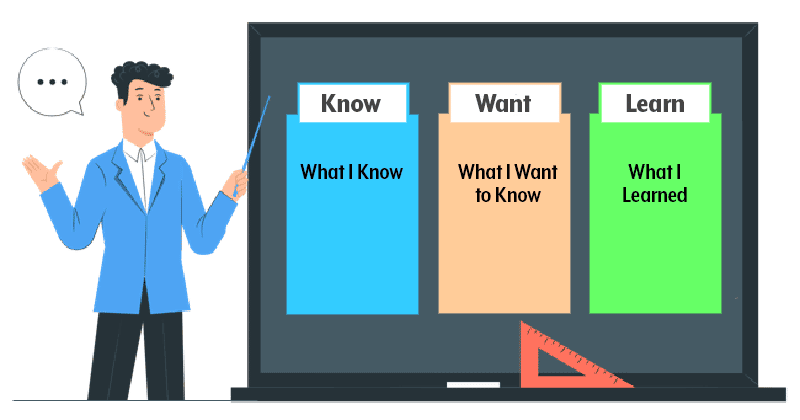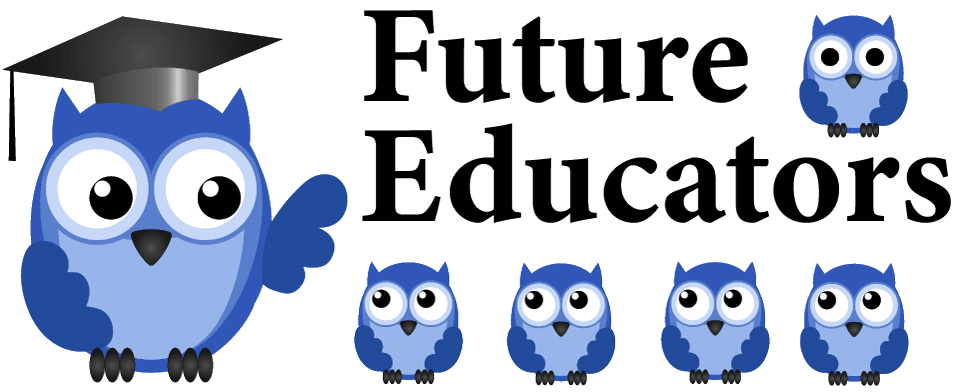The value of activating prior knowledge in the classroom is something every teacher should understand well. Even better, you should have some ideas for prior knowledge activities.
Here is a list of activities to activate prior knowledge in the classroom. Once you get a feel for these examples, you should be better able to come up with your own strategies on the fly.
After the activities list, we explore the meaning of prior knowledge. We also explain why, based on research, activating prior knowledge is such an effective teaching strategy.
Prior Knowledge Activities for the Classroom
“Activating prior knowledge is like preparing the soil before sowing the seeds of knowledge,” according to Professor Jim Cummins. And much like soil preparation, there are multiple ways to activate prior knowledge.
KWL Chart

A KWL chart is perhaps the most popular approach for activating a learner’s prior knowledge that we see in today’s classrooms. Many have faith in this proven and tested method.
In the K (What I Know) section, students write and share what they already know about the topic. As students uncover new material through written and digital texts, they add questions to the W (What I Want to Know) area. Finally, students express their learnings in the L (What I Learned) portion.
Graphic Organizers
A visual organizer is an educational and organizational tool for recording prior knowledge about a topic or chunk of text. They are made to assist students in understanding and applying text patterns and structures.
There are many kinds of graphic organizers out there. In fact, K-W-L charts are one of them, but there many more you can make use of. This includes T-charts, story maps, Venn diagrams, and concept maps.
Preparatory Texts
When it comes to reading exercises, this is highly recommended. To establish background knowledge and reading confidence, providing simple preparatory texts in advance of a more challenging reading activity can be very beneficial.
This isn’t to say that teachers should use simplified versions of the text that they will use later on. Instead, as a strategy to acquire background knowledge, teachers can present basic texts addressing subjects or ideas similar to those in the complex variation.
Brainstorming
Brainstorming blends lateral thinking with a casual, informal approach to problem-solving. It encourages people to come up with ideas and thoughts that may appear a little strange at first.
It’s true that brainstorming is usually done for creating solutions. But this fun activity can also be applied for activating prior knowledge with the same mechanics.
Anticipatory Guides
Students are asked to consider, write, and/or talk about their thoughts on important topics or concepts in upcoming texts and units of study in anticipatory guides.
Anticipatory guides are frequently set out as a list of assertions with which students must agree or disagree. They are used to assess a learner’s prior knowledge of the concept and to clarify any misunderstandings they may have about the subject.
What is Prior Knowledge Exactly?
Prior knowledge, also referred to as “background knowledge”, is the information and educational context a learner possesses before acquiring new content. This knowledge base is accumulated in many different ways over time.
Prior knowledge benefits learning when what the learner brings is correct and congruent with the new material being taught. Background knowledge that conflicts with new information, on the other hand, may have a negative impact.
Students come to the classroom with a broad range of pre-existing knowledge, skills, beliefs, and attitudes, which influence how they attend, interpret and organize in-coming information.
Eberly Center
Learning can be enhanced when instructors deploy strategies to access prior knowledge. Part of the process can involve assessing what learners already know. In a large classroom setting, it can be helpful to assume only a basic level of prior knowledge while also drawing on concepts previously taught.
Activating Prior Knowledge as a Teaching Strategy
Whenever you introduce a new topic to students, you should aim to activate their prior knowledge. For example, if you are introducing an historical figure, you could compare or contrast them with a famous person today. This strategy gives learners an instant mental sketch from which they can start to fill in the details.
Learning develops from prior knowledge. The teaching we provide them is only a secondary aid, helping learners to connect already familiar concepts. That’s why activating prior knowledge during instruction on new topics is an essential tool for teachers.
All learning involves transfer from previous experiences. Even initial learning involves transfer that is based on previous experiences and prior knowledge.
How People Learn
Learning amounts to connecting new data or concepts to what we currently perceive. So, to best facilitate the learning process in the classroom, teachers should aim to draw out what learners already know. Activating prior knowledge fast tracks the learning process.
Think about it for a moment. What students already know are the only resources they are truly familiar with and have confidence in. Instead of introducing many ideas at once that may seem alien, tap into prior knowledge. You can use the concepts already available to students and expand upon that foundation.
Why Prior Knowledge Activities are So Beneficial
You can tailor your instruction to match the needs of your learners by assessing their prior knowledge. These easy and adaptive tactics can assist you in quickly determining what your students know and don’t know.
When students lack sufficient prior information, learning relies on building a schema from the ground up instead of using existing foundations.
Activate Press
Being the one who’s ready to adjust will give your students the idea that the classroom is a place that they can be comfortable with when it comes to learning. With the right strategy, you can let your students know that learning doesn’t always need to be hard.

This article was well written. I have never had someone break down strategies for activating prior knowledge while teaching. Being able to activate prior knowledge during a lesson will allow the learning process to go more smoothly.